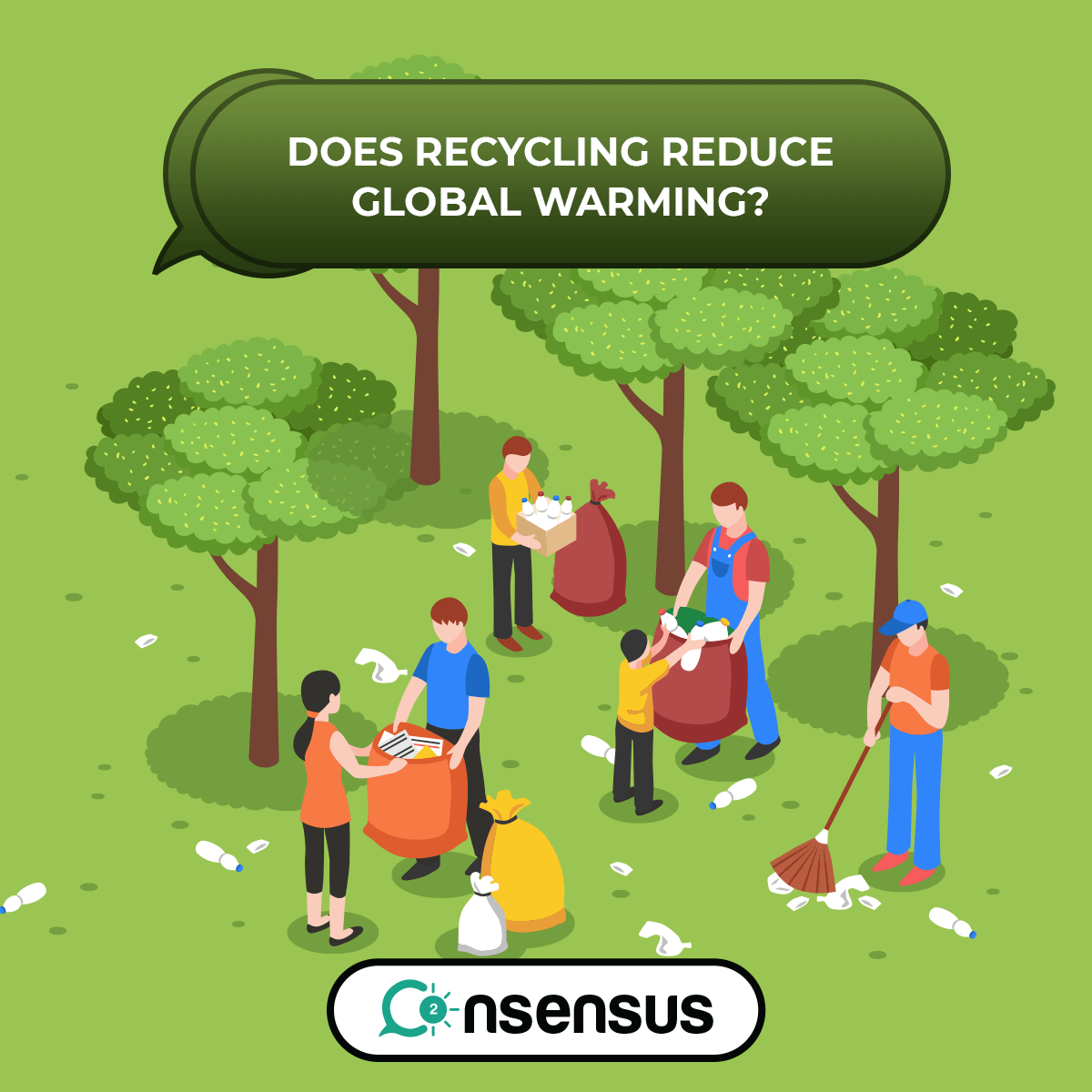Global warming is one of the most prevalent environmental concerns of the present generation. Therefore, people are now working towards ensuring that we take necessary steps that will help to reduce global warming and slow down the drastic climatic changes occurring all around us.
Recycling is the best available solution. We will guide you about the ways in which recycling can help to reduce global warming and climate change.
Recycling Saves Resources and Energy
Recycling of all sorts saves and reuses materials, meaning that less resources will need to be used in the future. In the case of paper, producing paper from recycled goods utilized 65% less energy than when paper is produced from the raw resources. Every ton of paper recycled saves 17 trees, and every tree is a vessel for trapping and containing carbon dioxide. When paper is recycled, that means fewer trees need to be cut down, which ultimately means that we are not only utilizing less energy but are also saving our resources.
Recycling Reduces Greenhouse Gases
Less energy consumed means that there are less greenhouse gases emitted as well. As greenhouse gases accumulate in the atmosphere, more and more heat becomes trapped, creating what is referred to as the “greenhouse effect.” This means recycling leads to a reduced production of carbon dioxide and other greenhouse gases.
Recycling Saves Water
Producing things like paper requires water, and that means wastewater needs to be treated before it can be used in that production. Treating wastewater is another generator of greenhouse gases. As making recycled paper only requires 20% of the amount of water that making paper from raw resources requires, recycling paper is a great way to cut down on greenhouse gases.
Recycling Keeps Trash Out of Landfills
All around the world, carbon dioxide is emitted from landfills. Overtime, paper in landfills breaks down, releasing carbon dioxide into the atmosphere. This means keeping trash out of landfills cuts down on these emissions, and instead helps to save on resources and reduce greenhouse gas emissions in other areas.
Recycle Your Cans
Aluminum cans are a great thing to recycle, as then not as much aluminum will be used to create new cans. Aluminum, like other resources, helps to slow climate change when it’s reused, as the amount of aluminum that needs to be mined is lessened when aluminum cans are recycled. The aluminum mining process also produces greenhouse gases.
Recycling Keeps the Burning of Trash Down
Another environmental benefit of recycling is that when trash is recycled, then less trash needs to be incinerated, which is another source of greenhouse gases.
Get Equipped to Recycle
Having the proper recycling cans marked for different recyclables can be a great way to get a jumpstart on playing a part in slowing down global warming. There are a number of ways which can offer customers a wide range of different kinds of recycling cans for every situation, including indoor and outdoor cans. All of these recycling cans are customizable to fit your needs.
Another way to reduce global warming is to recycle paper products. Paper recycling helps in the following ways.
Energy Savings
Pulp and paper is the 5th largest industrial energy consumer in the world, and therefore requires a lot of energy. Production of recycled paper uses 65% less energy than paper production using raw materials. Reducing energy consumption reduces greenhouse gas emissions.
Tree Preservation
Recycling one ton of paper saves 17 trees from being cut down. Each tree helps reduce global warming by capturing and holding carbon dioxide, a major greenhouse gas.
Water Savings
Methane and nitrous oxide, both greenhouse gases, are emitted during wastewater treatment. Production of recycled paper uses 80% less water than paper production using raw materials, reducing methane and nitrous oxide, and ultimately reducing greenhouse gases.
Typically, deforestation and landfill account for about 25 per cent of the world’s greenhouse gas emissions every year. Recycling has multiple tools in its arsenal to greatly reduce that figure. It reduces deforestation and emissions from landfill and it captures embodied energy.
Globally, landfill accounts for double the carbon dioxide emissions of the worldwide aviation sector. Surely it makes sense for us to focus at least as much on reducing the negative impact of landfill as we do on curtailing the effects of air travel. Overall in the US, just half of the waste paper is recycled. While, the rest goes in to landfill.
Following steps must be taken by policymakers and average citizens:
- We should buy 100 % recycled packaging as laminates cannot be recycled. This will help to ensure that the packaging material is recycled instead of being thrown in garbage.
- We must champion the rise of recycling rates.
- We must get our recycling message across to schools, so that our children learn a valuable lesson at an early age.
- Carbon-trading schemes and policies must be introduced. Moreover, we should recognise the benefits of landfill diversion and avoid deforestation as an abatement and carbon offset.
- There is a need to propose a Landfill Allowance Trading Scheme, which is effectively a cap-and-trade system for landfill.
- Governments should support energy-from-waste programs as a means of not only of reducing carbon emissions but for reducing energy costs.
